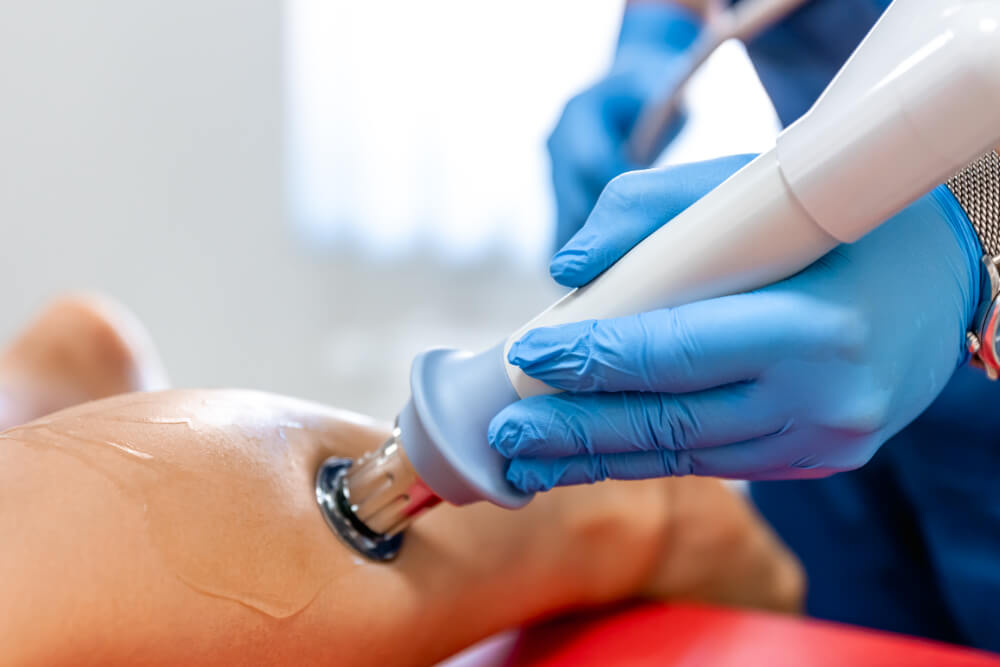Laser Therapy: A Non-Invasive Approach to Reducing Inflammation
Laser therapy, also known as photobiomodulation, is a therapeutic technique that involves the application of low-level laser light to specific areas of the body. This light energy interacts with the body’s cells, triggering a cascade of biological responses that can reduce inflammation, accelerate healing, and alleviate pain.
How Does Laser Therapy Work?
Laser therapy relies on light energy, typically in the form of red or near-infrared wavelengths, to penetrate deep into tissues. These wavelengths interact with cells, boosting mitochondrial activity and increasing the production of adenosine triphosphate (ATP). ATP is the energy currency of cells and plays a crucial role in repairing damaged tissues and reducing inflammation.
Key mechanisms of laser therapy include:
- Enhanced Blood Circulation: Laser energy stimulates vasodilation, improving oxygen and nutrient delivery to the affected area.
- Reduction of Pro-Inflammatory Cytokines: Laser therapy decreases cytokines like interleukin-6 (IL-6), which are responsible for inflammation.
- Activation of Antioxidants: The therapy promotes the release of antioxidants, which neutralize free radicals and minimize oxidative stress.
- Pain Relief: It triggers the release of endorphins and blocks pain signals, providing immediate relief.
Conditions Treated with Laser Therapy
Laser therapy has been used to treat a wide range of conditions, including:
- Musculoskeletal Pain: It can alleviate pain and inflammation associated with conditions like arthritis, tendinitis, and muscle strains.
- Soft Tissue Injuries: Laser therapy can accelerate the healing process for sprains, strains, and other soft tissue injuries.
- Chronic Pain: It can help manage chronic pain conditions such as fibromyalgia and neuropathy.
- Skin Conditions: Laser therapy can be used to treat acne, psoriasis, and other skin conditions.
- Wound Healing: It can promote faster wound healing and reduce scarring.
Benefits of Laser Therapy for Inflammation
Laser therapy offers several advantages over traditional treatments:
1. Reduces Swelling and Edema
Inflammation often results in swelling due to the accumulation of fluid and immune cells in the tissues. Laser therapy helps by promoting lymphatic drainage, which clears excess fluid and reduces edema.
2. Alleviates Chronic Pain
Conditions such as arthritis, tendonitis, and fibromyalgia are often accompanied by chronic inflammation and pain. Laser therapy addresses both by targeting inflammatory mediators and enhancing tissue repair.
3. Accelerates Tissue Repair
Injuries and surgeries often trigger inflammation as part of the healing process. Laser therapy expedites healing by stimulating fibroblast activity, which is critical for tissue regeneration.
4. Enhances Immune Response
By modulating immune cell activity, laser therapy prevents excessive inflammation and supports a balanced immune response.
Is Laser Therapy Safe?
Laser therapy is generally considered safe when administered by qualified healthcare professionals. However, it’s important to consult with a healthcare provider to determine if laser therapy is appropriate for your specific condition.
Applications of Laser Therapy in Medical Fields

Orthopedics
Laser therapy is commonly used in treating joint and musculoskeletal conditions like osteoarthritis, rheumatoid arthritis, and bursitis.
Sports Medicine
Athletes often use laser therapy for rapid recovery from injuries, including sprains, strains, and tendon tears.
Dermatology
It is effective for treating inflammatory skin conditions like psoriasis, acne, and rosacea.
Dentistry
Dentists use laser therapy to treat gum inflammation and post-surgical swelling, providing a comfortable experience for patients.
Veterinary Medicine
Laser therapy isn’t limited to humans; veterinarians use it to manage inflammation in animals, particularly in arthritis and wound healing.
Types of Laser Therapy
Low-Level Laser Therapy (LLLT)
This non-thermal therapy uses low-power lasers to treat inflammation and chronic pain without heating the tissues.
High-Intensity Laser Therapy (HILT)
HILT uses more powerful lasers for deeper penetration, often preferred for severe musculoskeletal conditions.
Cold Laser Therapy
Cold lasers do not generate heat and are primarily used for superficial injuries, inflammation, and pain relief.
Conclusion
Laser therapy is a revolutionary tool in managing inflammation and associated conditions. Its ability to reduce swelling, alleviate pain, and promote healing makes it an attractive option for patients seeking non-invasive, drug-free treatments. With advancements in technology and growing clinical evidence, laser therapy is poised to play a pivotal role in modern medicine.
Reach out to our Laser therapy treatment options to reduce inflammation (469) 200-5974 Or visit us https://scclittleelm.com/

